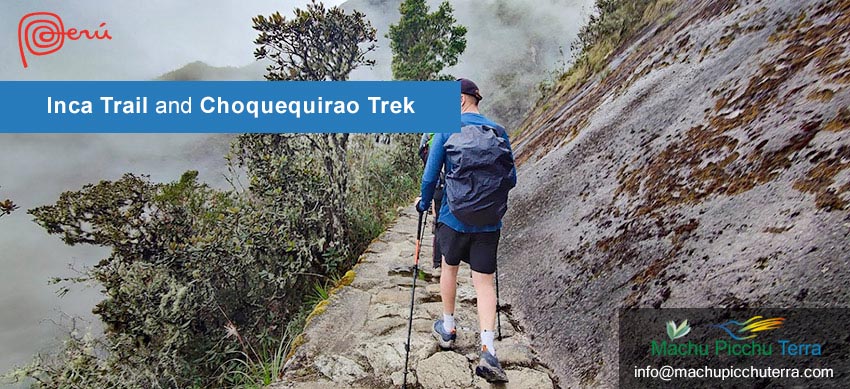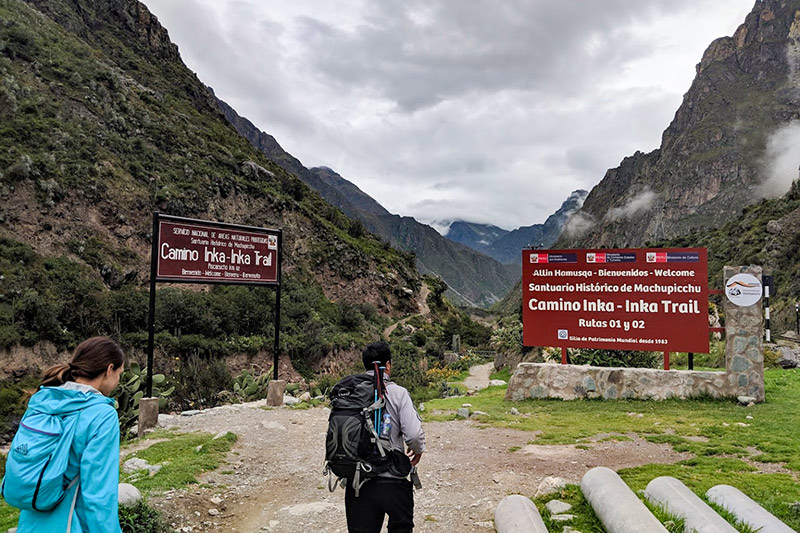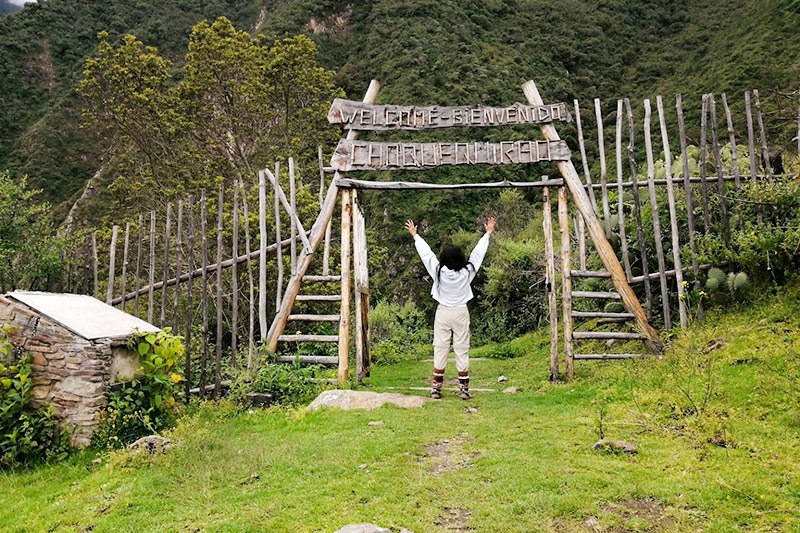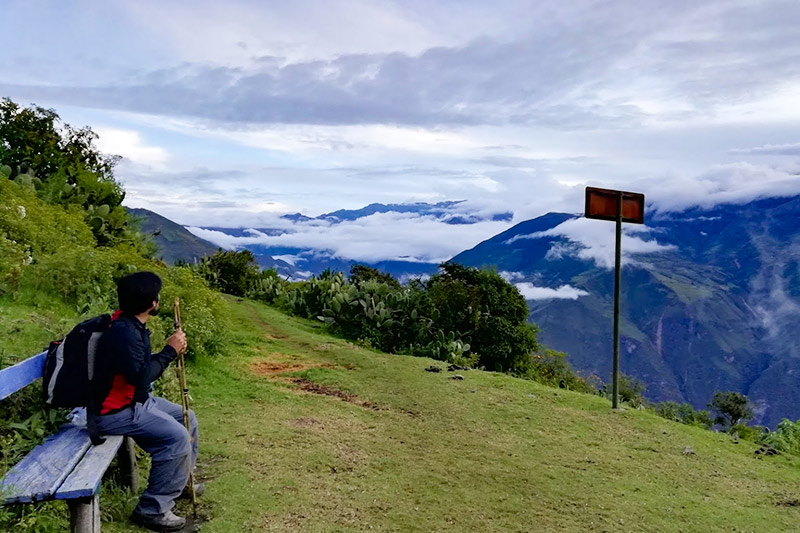
Two hiking routes test even the most experienced hiker. They are routes considered as moderate high, but in both cases, they have destinations that are a jewel to the ingenuity of the human being. In the case of the Inca Trail 4 days, the long hike has as its destination the wonder of the world Machu Picchu. During the Choquequirao Trek, the same name will invite us to visit the archaeological site that is considered the sacred sister of Machu Picchu. Both routes are incredible, and they go through beautiful landscapes that help to understand more of the urban organization of the Tawantinsuyo along with other mysteries. In this blog, we will know more about both tours and at the same time, we will make a brief comparison.
The 4-day Inca Trail route
The Inca Trail is one of the most beautiful routes that can be done worldwide. This, although it is currently one of the most crowded routes. The whole route never ceases to amaze the thousands of tourists who dare to cross it for 4 days. Likewise, it is considered one of the most beautiful routes on the planet because during the adventure you can visit different archaeological centers belonging to the Inca culture. In addition, most of the camps that were organized are very close to these places, so you have a precise and detailed tour of the places.
Likewise, the 4-day route allows you to cross different altitudinal levels. In this sense, you can find different geographical spaces and diversity of species of flora and fauna along the route. Much is said about the large number of people who make this trek, but normally during the route, it is unlikely to find a large number of people in a single camp. Normally the group of people are distributed in different camps. This allows everyone to have a suitable place to rest and continue with the trek. In addition, this allows the experience to be relatively intimate.
On the other hand, during the 4 days, 3 nights will be spent in the camps set up by the porters. They are also in charge of assisting the chef to prepare the food. All the services of the Inca Trail 4 days are this way, because it is a route regulated by the Ministry of Culture and only authorized agencies can do it. On the other hand, and as already mentioned, it is possible to visit at least one archaeological site every day. These places embellish not only the routes but also the experiences because they fit perfectly in front of such gigantic mountains.
It is important to mention the distance of the route, which is 44 kilometers distributed according to the geography, that is to say, not every day 11 kilometers are followed, but on some occasions, 16 kilometers can be covered, as in the case of the third day. This is because it already has an easier stretch to do. While to reach Machu Picchu, on the fourth day, only 6 kilometers are done. Another benefit is that during this tour you will reach the wonder of the world by the Intipunku and approximately during sunrise, when the sun seems to be giving a bath to all the buildings and walls of Machu Picchu.

The starting point of the Inca Trail near Piskacucho
Choquequirao 4-day trek
The route to Choquequirao has certain similarities with the Inca Trail, but we will see that later. Now we are interested in knowing more about the route. To begin with, there are two options to get to Choquequirao, the first and most popular is the route that starts in Cachora. Cachora is located in the valley of Apurimac so you have to make a trip of approximately 5 to 6 hours if you are in Cusco. On the other hand, it is possible to do the trek from Santa Teresa, a district in the province of La Convención that also connects with Hydroelectric, and in the same way, it is necessary to make a trip of 5 to 6 hours from Cusco.
To do the route through Santa Teresa, you have to start the hike in Yanama. When doing this route it is likely to meet hikers coming from the Salkantay Trek and also with those who did the extreme and complete route from Choquequirao to Machu Picchu, who are on their way to Machu Picchu. To do the route through Santa Teresa, you have to start the trek in Yanama. When doing this route it is likely to meet hikers coming from the Salkantay Trek and also with those who did the extreme and complete route from Choquequirao to Machu Picchu, who are on their way to Machu Picchu. We refer to the Huanipaca route. However, we would like to address only the first two. In the case of the trip from Cachora, allows us to appreciate all the majesty of the Apurimac Valley. It starts from the banks of the river and then you can appreciate the whole valley and the mountain range.
In the case of the Yanama route, we can find a geography of abundant vegetation. This will be lost as we advance in the walk. However, further on, just near Choquequirao you can find abundant vegetation, but not in equal comparison to that found in Yanama or Santa Teresa. In any of the options, you will reach Choquequirao during the third day. On the second day you arrive at the camping area, which is located a few meters from the site. In addition, it is ideal to visit it from the early hours of day three, before starting the return trip.
The total hike to Choquequirao and return to the starting point, that is, during the round trip, is 48 kilometers on the Yanama or Santa Teresa route. While, by the classic or Cachora route, there is a total distance of 64 kilometers. As already mentioned, the hike differs particularly because of the geography in which it starts. The similarities and points of comparison will be detailed below. Before that, it is worth mentioning that, due to the difficulty of the pass and the fear of some tourists, Choquequirao is a little visited and traveled route compared to the Inca Trail. That is why it is possible to do the trek without the need to make a reservation as such. However, it will be necessary to carry cash to make the payment before entering or buying snacks, drinks, or others.
Similarities between the Inca Trail and Choquequirao Trek

About to enter Choquequirao
- Destinations – Both routes connect with archaeological sites. In the case of the Inca Trail, in any of its variations, will culminate in Machu Picchu. While reaching Choquequirao allows you to see an Inca space larger than the wonder of the world.
- Effort – Both routes require a great deal of effort during the hike. Both are classified as high-moderate trekking routes. In the case of the Choquequirao Trek, it follows a flat stretch and uphill slopes. While, for the Inca Trail, similar stretches are followed, increasing it, the stretches of climbs, typical of the Qhapac Ñam.
- Campsites – When doing any of the routes, you will spend the night in approved campsites. A minimum of 3 nights in the camps is required to achieve this goal.
- They are challenging – Both hiking trails are considered hiking trails and are challenging. To complete these routes without problems, it is necessary to have physical preparation at least 3 months in advance.
- Acclimatization – Acclimatization is necessary for both routes. Both routes start at more than 3000 meters above sea level. This may cause some discomfort or discomfort. Remember to make a good acclimatization.
- Date of travel – Being located near Cusco, both routes have a similar climate, generally speaking. In both cases, it is recommended to do them in the dry season. That is, from May to August. Being the dates with less probability of rain.
- Great archaeological legacy – In both places, you can find important vestiges and details of what was the Inca culture. That is why they have an incredible array of research to better understand the entire social process of the Incas.
- They have variations – Both Choquequirao Trek and the Inca Trail have options that may interest families or those who want shorter day hikes along the route. Both routes have 5-day versions that make them more comfortable.
- Safety – No need to worry, these are safe activities. These routes are well maintained and signposted, so it is unlikely to get lost. However, it is recommended to do it with a tourist agency. They will help immediately in case of an emergency and will be of great help, especially if you have no experience in hiking routes.
- Difficulty – The routes have their degree of difficulty, classified as “moderately high”. In this sense, it is required that the interested party takes this factor into account before starting the hike.
Differences between the Inca Trail and Choquequirao Trek

One of the landscapes of Choquequirao
- Reservation – In both cases the reservation is different. In the case of the Inca Trail, reservations must be made 4 to 6 months in advance. In the case of Choquequirao, it is possible to make the payment at the time of entering the archaeological site.
- The return – The Choquequirao route is a round-trip walking route in any of its variations. While at the time of doing the Inca Trail and culminating the visit to Machu Picchu, the return is to be made by train to Ollantaytambo and, from there, by bus to Cusco. There is also the possibility of making the trip directly by train to Cusco.
- The highest point – Being in different geographical areas we find that the highest point of altitude can be found in the Warmiwañuska pass. During the Inca Trail at about 4200 meters above sea level. While during the Choquequirao route, the highest point is in Cusco at 3399 masl, even descending to 1520 masl.
- Guided – To do the Inca Trail, it is necessary to do it with the presence of a professional and authorized guide. At the same time, the Choquequirao route can be done on your own.
- Distance to cover – Both routes are relatively long for the 4 days. In the case of the Inca Trail, 44 kilometers are covered. While for the Choquequirao 64 kilometers.
- The camps – The camps will be different because the resting points for the Inca Trail vary according to availability. While in the Choquequirao Trek campsites, you can camp freely. This is because there is little demand.
- Route – Different geographical spaces can be appreciated. In the case of the Inca Trail, the route leads us to the high jungle. While in the Choquequirao route, we reach the limit between the Andes and the high jungle. However, in both cases, it is possible to appreciate beautiful landscapes.
- Number of people – The Inca Trail route is more crowded because of the security it offers and also because of the visit to Machu Picchu and other archaeological sites. On the other hand, the Choquequirao route is less crowded and gives a mysticism to the route.
- Permits – It is necessary to do the Inca Trail route with the help of a travel agency. In addition, it is necessary to take into account that during February, this route is closed. On the Choquequirao route, there is no such exhaustive control.
- Year of construction – It was established that according to the possible years of construction of these places, Machu Picchu was built about 30 years before Choquequirao. The possible year of construction of the wonder of the world dates from 1400 AD.
Comparison chart
Data | Classic Inca Trail | Choquequirao Classic |
|---|---|---|
| Start of the route | Kilometer 82 – Piskacucho | Cachora (Apurímac) |
| End of the route | Machu Picchu | Choquequirao |
| Highest point | Warmiwañusca 4200 masl. | Cusco 3399 masl. |
| Lowest point | Aguas Calientes 2050 masl. | Playa Rosalina 1520 masl. |
| Dates of entry | All year round, except February | All year round |
| Tour cost | 600 – 750 USD (aprox.) | 600- 700 USD (aprox.) |
| Total distance of the trek | 44 kilometers | 64 kilometers |
| Route details | Trail and uphill route | Trocha, ascending route and stairways |
| Weather Details | Cool to warm | Cool to warm |
| Altitude sickness problems | Moderate probability | Slight probability |
By Inca Trail Machu Picchu - Last updated, 27-02-2024
Interested in the Inca Trail? Know more about Information Inca Trail!
- Inca Trail hike as a therapy to heal body and soul
- What is it like to camp overnight on the Inca Trail?
- Online availability Inca Trail to Machu Picchu 2025
- Sustainability tips for the Inca Trail
- How to get to Ollantaytambo?
- Physical preparation for the Inca Trail
